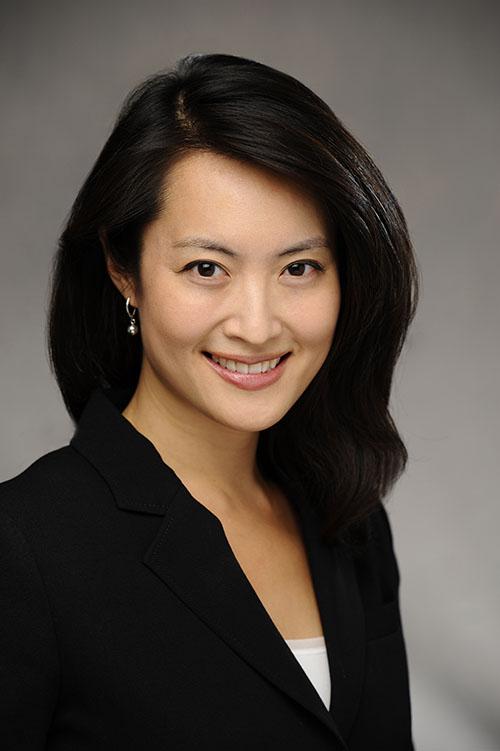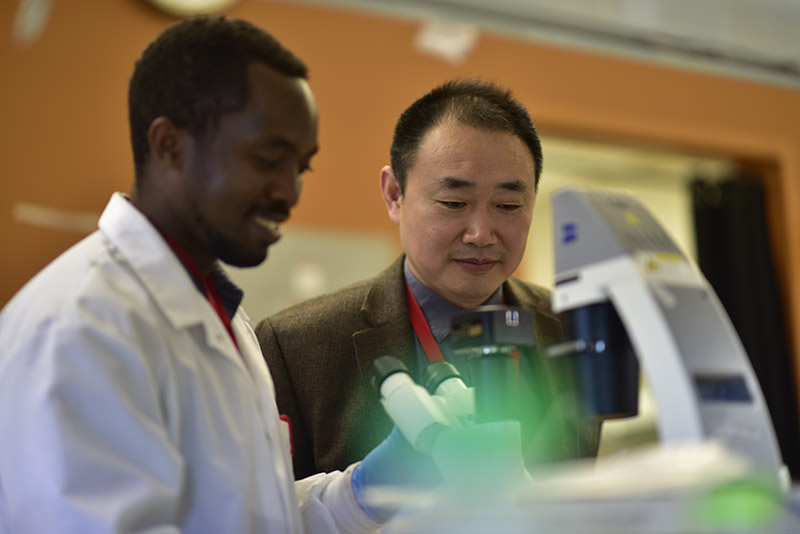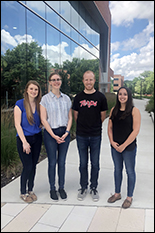News Story
Developing a Therapeutic to Treat Injured Tendons

BIOE Associate Professor Catherine K. Kuo
A University of Maryland (UMD)-led research team is developing a novel method to restore or improve tendon functionality using a naturally occurring enzyme in the body. The group’s findings – published in Frontiers in Bioengineering and Biotechnology– could one day lead to a therapeutic to treat acute and chronic tendon and ligament injuries.
In the human body, tendons play a vital role in enabling a person’s movement. These fibrous connective tissues consist largely of collagen proteins and water, and attach muscles to other parts of the body – namely, bones – allowing us to move when muscles contract and relax.
Unfortunately, tendons are also prone to injury. Even more, unlike muscles, tendons have a limited blood supply, which means they can take significant time and rehabilitation to heal, and they often do not recover to their full strength or mechanical properties. Each year, more than 30 million musculoskeletal injuries occur in the United States alone, and roughly half of them are tendon and ligament injuries, according to a study published in the Journal of Hand Surgery.
Recognizing this, UMD Fischell Department of Bioengineering (BIOE) Associate Professor Catherine K. Kuo is working with members of her Developmental and Regenerative Engineering Lab to develop an approach that might one day lead to tendon-specific therapeutics to treat tendons – a would-be first in medicine.
“Because tendons are so prone to wear and tear, people of all walks of life are susceptible to tendon injuries,” Kuo said. “Whether you’re a professional or college athlete, an office-worker who spends many hours each day on a computer, or a senior who is enjoying retirement, your quality of life could be impacted by a tendon injury resulting from overuse, trauma, or chronic inflammation. A therapeutic to restore native tendon mechanical properties and function to injured or diseased tendons could make a world of difference for millions of people.”
Kuo’s technique centers on promoting a process known as crosslinking – or binding – of collagen molecules found in tendons. Collagen crosslinks play a critical role in tendon elasticity and, thus, impact tendon development and repair.
Previous studies have proposed ways to ramp up the crosslinking of components in tendons in order to facilitate repair. But, existing studies have used crosslinking agents that are not naturally present in the body and have harmful effects at the concentrations needed.
In search of a more promising option, Kuo and her team chose to investigate how tendons are naturally strengthened during development, starting with the embryo. Her lab discovered that lysyl oxidase (LOX), a naturally occurring enzyme, is a critical regulator of tendon mechanical properties during new tissue formation.
LOX drives the formation of crosslinks between collagen molecules, including the kinds that are most prevalent in tendons. Previously, Kuo’s group made this discovery by showing that when LOX is inhibited during tendon development, this inhibition adversely impacts tendon elasticity.
Building on this discovery, Kuo and her team examined the effects of engineered LOX (recombinant LOX, abbreviated rLOX) treatment on chick embryonic tendons at different developmental stages. The group’s findings offer promise for the future of tendon repair; the team successfully demonstrated that rLOX treatment can induce additional collagen crosslinking and thus restore the tendon’s mechanical properties.
Concerned that applying too much rLOX might over-stiffen tendons, Kuo and her team tested varying concentrations of rLOX. They discovered that higher concentrations of rLOX led to a plateau in crosslinking levels and that the mechanical properties remained within natural levels. In this way, Kuo’s team has taken an extraordinary step toward developing a therapeutic that could one day be used to heal injured or weakened tendons without the need for surgical repair.
“Not only are tendon injuries disruptive to daily life but, according to the Centers for Disease Control and Prevention, they are a leading cause of work disability,” Kuo said. “A therapeutic that could safely – and naturally – restore tendon mechanical properties could be the difference-maker for someone who might otherwise endure a leave of absence or, worse, a loss of work.”
In addition to poor tendon healing, abnormal LOX-mediated collagen crosslinking plays a significant role in heritable connective tissue disorders and birth abnormalities that affect tendons, including Ehlers Danlos syndromes and clubfoot.
“We set out with plans to develop adult tendon treatment strategies based on what we learned from studies in the embryo, but our work provided surprising insights into how abnormal LOX levels also drive formation of birth defects, such as clubfoot,” said Kuo. “We anticipate that the development of a LOX-based strategy to strengthen abnormally developing tendons associated with clubfoot and other common birth defects could one day shorten treatments from five years of surgery and physical bracing to just one or two local injections at the affected tissue site.”
“Our findings demonstrate the exciting feasibility of future therapeutics to make tendons stronger based on a naturally occurring target that has been long investigated by our lab,” said Phong K. Nguyen, a Kuo Lab graduate student and first author of the Frontiers paper. “This study may have tremendous implications for clinical treatments of tendon-related birth defects and adult tendon injuries."
Moving forward, Kuo and her team plan to test their approach in adult mammalian tendons and further explore if rLOX treatment of injured or diseased adult tendons can restore – without exceeding – the natural mechanical properties of healthy adult tendons. The group also plans to test whether rLOX can do this without causing unwanted side effects within tendon cells or tissue, Kuo said.
The full title of the Frontiers in Bioengineering and Biotechnology paper is “Tendon mechanical properties are enhanced via recombinant lysyl oxidase treatment.” In addition to Catherine K. Kuo and Phong K. Nguyen, the following authors contributed to the paper: Aniket Jana (Kuo Lab postdoctoral researcher), Chi Huang (University of Rochester graduate student), Alison Grafton and Iverson Holt (Kuo Lab undergraduate researchers), and Michael Giacomelli (University of Rochester).
In addition to her appointment in BIOE, Kuo holds secondary appointments with the University of Maryland, Baltimore School of Medicine and the UMD Biophysics program, as well as a Fischell Fellow appointment in the UMD Robert E. Fischell Institute for Biomedical Devices. Follow Kuo on Twitter at @KuoLab.
Published August 25, 2022












